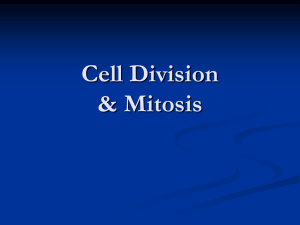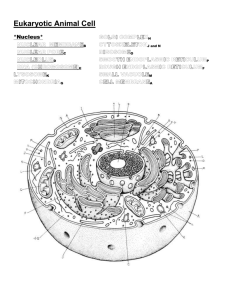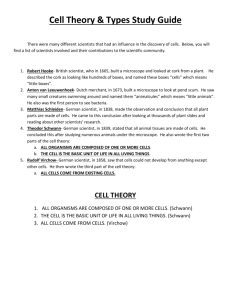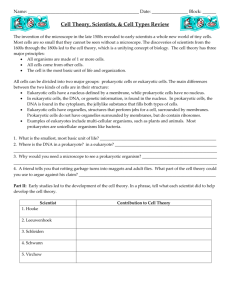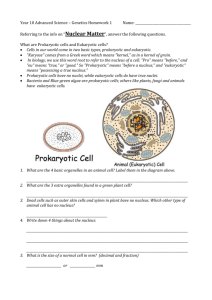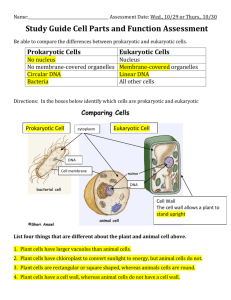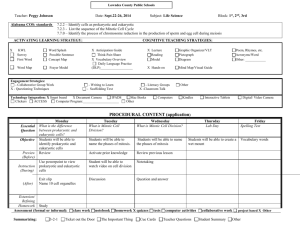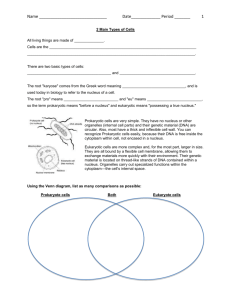Two Basic Cell Types - Biology with Miss G.
advertisement
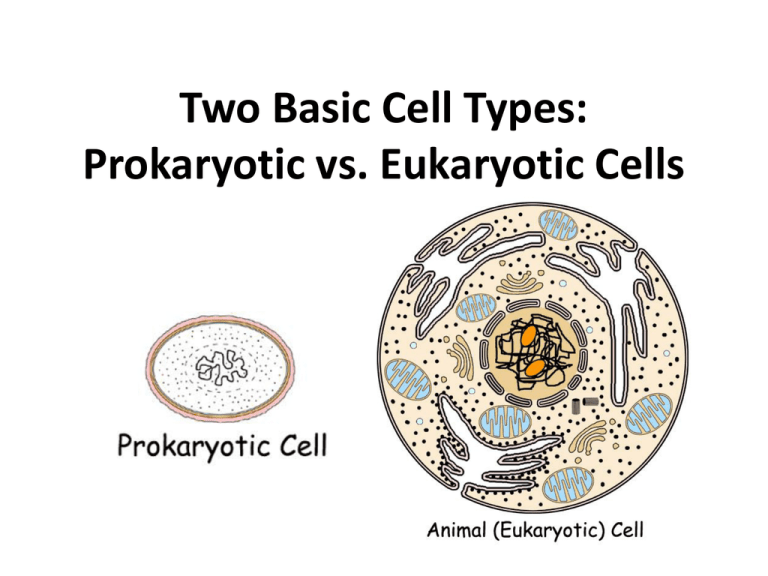
Two Basic Cell Types: Prokaryotic vs. Eukaryotic Cells Two Basic Types • Remember….cells are the basic unit of life for ALL living things. • There are two basic types of cells: 1. Prokaryotic cells – found in bacteria 2. Eukaryotic cells – found in protists, fungi, plants and animals Characteristics Shared • Perform the same basic functions • Surrounded by plasma membrane to control what enters and leaves the cell • “Filled” with cytoplasm • Contain ribosomes to make protein • Contain DNA to give the general instructions for the cell’s life What Makes Eukaryotic Cells Different? Much larger • • Much more complex • Contain a true nucleus to house the genetic material (DNA) • Linear DNA packaged into chromatin found inside the nucleus • Contains specialized structures in the cytoplasm called organelles to carry out various functions • Not all have a cell wall Eukaryotic Cells What Makes Prokaryotic Cells Different? • Much smaller • Less complex • • • • No true nucleus Circular DNA that is found in the cytoplasm No organelles found in the cytoplasm Surrounded by a cell wall Prokaryotic Cell What does size have to do with it? • Prokaryotic cells are much smaller than eukaryotic cells. Why? – Smaller surface area to volume allows nutrients to easily and quickly reach inner parts of the cell. – Eukaryotic cells are larger and can not pass nutrients as quickly. They require specialized organelles to: • carry out metabolism • provide energy • transport chemicals throughout the cell Prokaryotic Cell http://www.cellsalive.com/ cells/bactcell.htm#top

